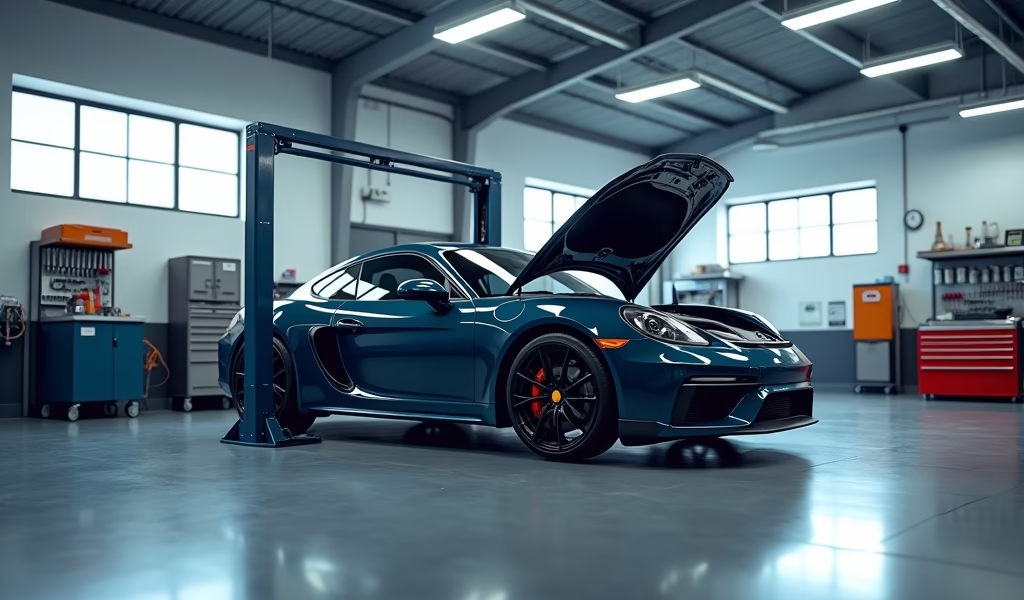Overview
This article emphasizes the critical importance of regular vehicle maintenance for owners with zero-down car loans, highlighting five essential maintenance areas (oil changes, tire care, fluid checks, brake maintenance, and battery care) that protect both the vehicle’s value and the owner’s financial health. Proper maintenance helps owners overcome the initial negative equity position of zero-down loans while avoiding costly emergency repairs, with the article providing specific maintenance schedules, DIY versus professional service guidance, and budgeting strategies for cost-effective vehicle care.
Table of Contents
- Understanding Zero Down Car Loans: Blessing or Burden?
- The Importance of Maintenance When You’ve Got No Down Payment
- Tip #1: Regular Oil Changes – The Lifeblood of Your Investment
- Tip #2: Tire Care and Rotation – Where the Rubber Meets Responsibility
- Tip #3: Checking Fluid Levels – Small Tasks, Big Impact
- Tip #4: Brake Maintenance – Safety You Can’t Compromise On
- Tip #5: Battery Care and Testing – Preventing Shocking Surprises
- Budgeting for Car Maintenance with a Zero Down Loan
- DIY vs. Professional Maintenance: Finding the Balance
- Conclusion: Protecting Your Investment and Your Wallet
- Frequently Asked Questions
Understanding Zero Down Car Loans: Blessing or Burden?
November 19, 2023 – As a mechanic who’s seen both the gleam of new purchases and the grimace of unexpected repairs, I can tell you that zero down car loans are like that first cup of coffee on a Monday – immediately satisfying but potentially troublesome later if you’re not careful. These financing options let you drive off the lot without emptying your savings account, which sounds as tempting as a perfectly tuned engine on an open highway.
But here’s the wrench in the works – when you finance 100% of your vehicle, you’re immediately upside down on your loan. That means if something goes wrong early in your ownership, you’re stuck between a rock and a hard place financially. Last month, I helped a customer named Mike who had taken a zero down deal on a sleek sedan. Six months later, his transmission needed work, but he had no emergency fund because he’d prioritized the higher monthly payments. Preventative maintenance could have saved him thousands.
Think of your car like your body – preventative care is always cheaper than emergency surgery. And when you’ve opted for a zero finance car deal, proper maintenance isn’t just recommended – it’s absolutely essential. According to a study by Cox Automotive, vehicles with documented maintenance histories retain up to 20% more value than those without, something crucial when you’re starting with negative equity.
The Importance of Maintenance When You’ve Got No Down Payment
When you’ve secured a car with no money down, your vehicle isn’t just transportation – it’s a financial obligation that requires careful attention. Like a high-wire act without a safety net, you’re balancing higher monthly payments against the need to maintain your car’s condition and value. Proper maintenance becomes your financial protection plan.
Having spent 15 years under hoods and behind diagnostic computers, I’ve witnessed firsthand how small maintenance decisions today dramatically impact repair bills tomorrow. Regular maintenance might seem like an unnecessary expense when you’re already stretching your budget with those heftier payments, but skipping it is like ignoring a check engine light – that small glow of warning can quickly become a major mechanical meltdown.
Consider this: the average major repair costs between $500-$2,000, while preventative maintenance might run you $30-$150 per service. Would you rather pay for an oil change now or an engine replacement later? When you’re carrying a zero car finance deal, that equation becomes even more critical as you’re already starting with higher financial exposure.

Tip #1: Regular Oil Changes – The Lifeblood of Your Investment
Oil changes are to your engine what morning coffee is to most of us – absolutely essential for proper functioning. Fresh oil lubricates, cleans, and cools your engine’s moving parts, preventing the kind of friction that can turn metal components into expensive paperweights. For those with zero down car loans, skimping here is like playing Russian roulette with your financial future.
Let me tell you about Janet, who came into my shop last year with a seized engine in her three-year-old compact SUV. She had stretched her oil changes to 15,000 miles to save money while managing her high car payments. The repair? Nearly $4,500 – money she didn’t have because she was already underwater on her loan. A $50 oil change every 5,000-7,500 miles would have prevented this entire disaster.
For most modern vehicles, I recommend following these oil change intervals:
- Conventional oil: Every 3,000-5,000 miles
- Synthetic blend: Every 5,000-7,500 miles
- Full synthetic: Every 7,500-10,000 miles (though I still suggest the lower end of that range)
Remember, these intervals might vary based on your driving conditions. Stop-and-go traffic, extreme temperatures, or towing can all necessitate more frequent changes. Your owner’s manual (that book collecting dust in your glove compartment) has the manufacturer’s specific recommendations for your vehicle.
Pro tip: Each time you get your oil changed, ask for a quick multi-point inspection. Many shops offer this free with an oil change, and it can catch brewing problems before they become budget-busters. According to Edmunds.com, regular oil changes can extend engine life by up to 50% – crucial protection when you’re starting ownership without equity.
Tip #2: Tire Care and Rotation – Where the Rubber Meets Responsibility
Your tires are the only part of your vehicle that actually touches the road, making them critically important to both safety and performance. They’re also silently communicating with you every day through their wear patterns – if only you’d listen! For zero down loan holders, tire maintenance offers some of the best bang-for-your-buck protection against unnecessary expenses.
Tire rotation costs about $20-50 every 5,000-7,500 miles, but extends tire life by up to 20%. Do the math: a set of new tires can easily run $600-1,200. Wouldn’t you rather rotate regularly and delay that expense as long as possible? I still remember Carlos, who came in for new tires after just 25,000 miles. His front tires were bald while his rears looked nearly new. When I asked about his rotation schedule, he gave me a blank stare that said it all.
Here’s your tire care checklist:
- Check tire pressure monthly (including the spare)
- Rotate tires every 5,000-7,500 miles
- Inspect for uneven wear, which could indicate alignment issues
- Maintain proper alignment (check yearly or if you notice pulling)
- Replace tires when tread depth reaches 4/32″ (winter driving) or 2/32″ (minimum legal limit)
The penny test works in a pinch: insert a penny with Lincoln’s head upside down into your tire tread. If you can see the top of his head, your tires need replacement. But with a zero down loan, you want to be proactive, not reactive – so check those tires monthly.
Proper tire pressure alone can improve fuel economy by up to 3%, according to the U.S. Department of Energy. When you’re managing higher monthly payments, every dollar saved at the pump matters.
Tip #3: Checking Fluid Levels – Small Tasks, Big Impact
Your vehicle runs on various fluids that function like the bodily fluids in our own systems – they cool, lubricate, transmit power, and ensure everything functions harmoniously. Checking and maintaining proper fluid levels is perhaps the easiest and most cost-effective maintenance you can perform, yet I’m constantly amazed by how many zero down loan customers overlook these simple checks.
Last summer, a frantic young woman named Sophia called our shop when her relatively new sedan overheated on the highway. She’d been making $500 monthly payments but hadn’t checked her coolant level in the eight months she owned it. A small coolant leak had gradually emptied her reservoir, resulting in overheating that cracked her cylinder head. The $1,800 repair could have been prevented with a 30-second check and a $15 bottle of coolant.
Make these fluid checks part of your monthly routine:
- Engine oil (check when cool, parked on level ground)
- Coolant/antifreeze (only when engine is cool!)
- Brake fluid (should be amber to light brown, never dark)
- Power steering fluid (if applicable)
- Transmission fluid (usually checked when warm, running, and in park)
- Windshield washer fluid (a safety item often forgotten)
These checks take less than five minutes but can prevent catastrophic failures. I recommend picking a specific day each month – perhaps when you pay your car payment – to pop the hood and make these simple inspections. Low fluid levels often indicate leaks or consumption issues that, caught early, might be simple fixes rather than major repairs.
Remember: when checking fluids, consistency matters more than perfection. Setting a regular schedule will help you notice gradual changes that might indicate developing problems.

Tip #4: Brake Maintenance – Safety You Can’t Compromise On
Let’s talk brakes – the system you never think about until that heart-stopping moment when you need them to perform perfectly. With a zero down car loan, brake maintenance isn’t just about safety (though that’s paramount); it’s also about protecting your investment from cascading repair costs that can push you further underwater on your loan.
Brake pads are like the shoes on your feet – they wear down gradually with use and need regular inspection. Most vehicles have wear indicators that create a squealing noise when pads are getting thin, but by then, you’re already cutting it close. I recall a customer, Trevor, who ignored his brake squeal for months while juggling his high car payment. By the time he came in, his pads were metal-on-metal, which had damaged his rotors and calipers – turning a $150 pad replacement into an $800 brake system overhaul.
Here’s your brake maintenance strategy:
- Listen for squealing, grinding, or pulsating when braking
- Have your brakes inspected during oil changes
- Replace pads when they reach about 3-4mm thickness
- Flush brake fluid every 2-3 years (it absorbs moisture over time)
- Address any brake issues immediately – they only get more expensive
One clever way to extend brake life is to adopt gentle driving habits. Anticipate stops, avoid “riding” your brakes on downhills, and practice gradual deceleration. These techniques can double your brake pad life while improving fuel economy – a double win for your budget-conscious situation.
Brake fluid should be clear to slightly amber – if it’s dark brown or black, it’s time for a flush regardless of time interval. Contaminated fluid can damage expensive components like the ABS module, which can cost upwards of $1,000 to replace.
Tip #5: Battery Care and Testing – Preventing Shocking Surprises
Your car’s battery is like the heart of your electrical system – when it fails, everything stops. There are few things more frustrating than making your monthly zero down loan payment only to find yourself stranded with a dead battery that could have been prevented with basic maintenance.
Batteries typically give subtle warnings before they fail completely. The most common sign is increasingly sluggish starting, especially in colder weather. Unfortunately, most people miss these warnings until that fateful morning when the car won’t start at all – usually when you’re already running late. My customer Rachel learned this lesson the hard way when her battery died during a crucial job interview. The irony? She’d chosen a zero down loan to preserve her savings, but ended up missing a career opportunity because of a $150 maintenance item.
Follow these battery best practices:
- Have your battery tested at least twice a year (before summer and winter)
- Keep battery terminals clean of corrosion (a mix of baking soda and water works wonders)
- Ensure cables are tight and corrosion-free
- For longer parked periods, consider a trickle charger
- Replace batteries proactively around the 3-4 year mark in most climates
Most auto parts stores offer free battery testing – take advantage of this service every six months. A failing battery can actually damage your alternator as it struggles to keep up with the charging demands, potentially turning a $150 battery replacement into a $500+ repair bill.
Modern vehicles with their sophisticated electronics are particularly sensitive to proper battery function. Even brief voltage drops can reset computer systems and cause mysterious electrical gremlins that are frustrating and expensive to diagnose.
Budgeting for Car Maintenance with a Zero Down Loan
When you’re managing the higher monthly payments that come with a zero down car loan, budgeting for maintenance can feel like trying to squeeze water from a stone. However, failing to plan for maintenance isn’t just risky – it’s mathematically guaranteed to cost you more in the long run.
I advise my customers to follow the 1% rule: budget at least 1% of your vehicle’s value for annual maintenance. For a $25,000 car, that’s $250 per month set aside for maintenance and repairs. That might sound steep alongside your car payment, but consider the alternative: a major repair that you can’t afford, potentially leaving you without transportation while still obligated to make loan payments.
For those with tighter budgets, here’s a practical approach:
- Establish a dedicated “car care” savings account separate from your emergency fund
- Contribute what you can each month, even if it’s just $50
- Prioritize maintenance by urgency: safety items first, then preventative care
- Look for service specials and coupons (but never skip maintenance to save money)
- Consider services like prepaid maintenance plans if offered at reasonable rates
Remember that each dollar spent on preventative maintenance typically saves $3-5 in repairs down the road. That’s an investment return most financial advisors would envy! Plus, a well-maintained vehicle retains more value, helping you overcome the negative equity position that zero down loans initially create.
DIY vs. Professional Maintenance: Finding the Balance
As someone who’s spent decades working on cars professionally, I’ll let you in on a little secret: not all maintenance requires a certified technician. Learning to perform basic maintenance tasks yourself can be both empowering and economical, especially when you’re managing a zero down car loan.
DIY-friendly maintenance tasks include:
- Checking and topping off fluids
- Replacing air filters (engine and cabin)
- Changing wiper blades
- Checking tire pressure and condition
- Battery terminal cleaning
- Basic exterior and interior care
However, some tasks are best left to professionals:
- Brake system repairs
- Timing belt replacements
- Electrical system diagnosis
- Transmission service
- Engine internal repairs
The sweet spot for many zero down loan holders is to DIY the simple stuff while building a relationship with a trustworthy independent shop for the more complex work. I’ve seen customers save thousands by handling basic maintenance themselves while still getting professional help for critical services.
If you’re new to DIY maintenance, YouTube channels like ChrisFix offer excellent tutorials specific to most makes and models. Just remember the mechanic’s golden rule: if you’re not completely confident in your ability to complete a repair properly, it’s always cheaper to pay a professional than to fix a DIY gone wrong.
Conclusion: Protecting Your Investment and Your Wallet
Securing a zero down car loan might feel like winning the first lap of a race, but maintaining your vehicle properly is how you cross the finish line with your finances intact. The five maintenance tips we’ve covered – oil changes, tire care, fluid checks, brake maintenance, and battery care – form the foundation of a responsible ownership strategy that protects both your transportation needs and your financial health.
Throughout my career turning wrenches and diagnosing problems, I’ve seen the stark contrast between owners who prioritize maintenance and those who don’t. The former group enjoys reliable transportation with predictable costs, while the latter bounces from one expensive emergency to the next. When you’re already managing the higher payments of a zero down loan, you simply can’t afford to be in that second group.
Remember that your vehicle represents one of your largest financial commitments. Treating it with care isn’t just about preventing breakdowns – it’s about preserving value, maintaining safety, and ensuring that your zero down decision doesn’t become a financial burden. By implementing these maintenance strategies and budgeting appropriately, you can enjoy your vehicle with confidence while gradually building equity in your automotive investment.
The road to financial and automotive well-being might have started with a zero down loan, but it continues with your commitment to proper care and maintenance. Your future self – and your wallet – will thank you for the attention you pay today.
Frequently Asked Questions
What credit score do I need for a zero down car loan?
Most zero down car loans require a credit score of at least 700, though some lenders may approve scores in the mid-600s. Better credit scores typically secure more favorable interest rates.
Do zero down car loans have higher interest rates?
Yes, zero down loans usually carry higher interest rates compared to loans with substantial down payments. Lenders view them as higher risk due to the lack of initial equity.
How quickly can I build equity in a zero down car loan?
Building equity typically takes 2-3 years depending on your loan terms and vehicle depreciation rate. Proper maintenance helps maintain value, allowing you to build equity faster.
Are extended warranties worth it with zero down loans?
Extended warranties can be valuable for zero down loans as they provide financial protection when you’re already in a negative equity position. Compare coverage details and pricing from multiple sources before deciding.
Can I refinance a zero down car loan?
Yes, refinancing becomes possible once you’ve built some equity and improved your credit profile. Wait at least 12-18 months before attempting to refinance for better rates.

